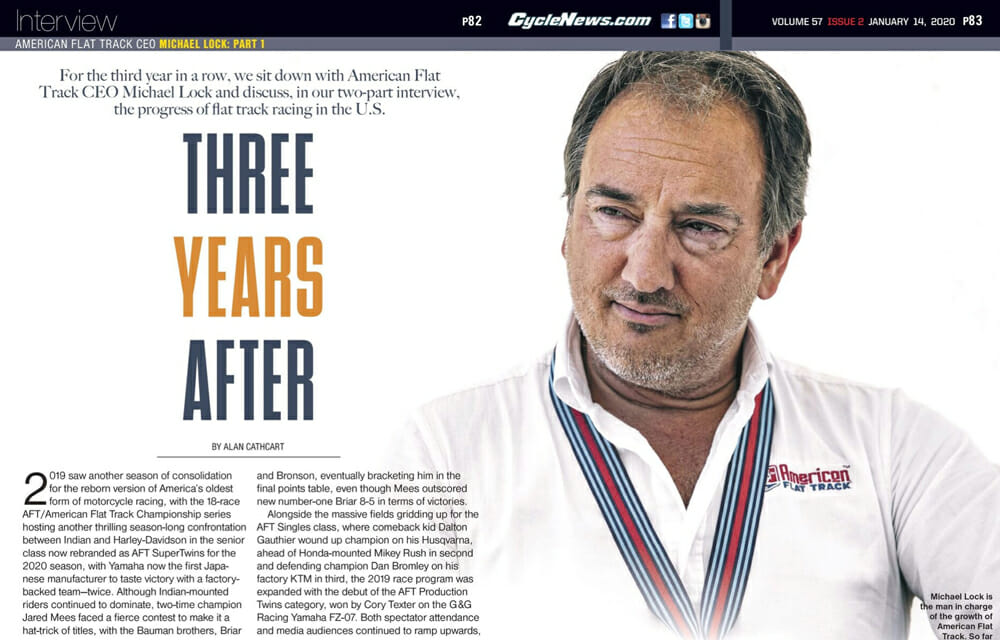Alan Cathcart | January 16, 2020
For the third year in a row, we sit down with American Flat Track’s CEO Michael Lock and discuss, in our two-part interview, the progress of flat track racing in the U.S.
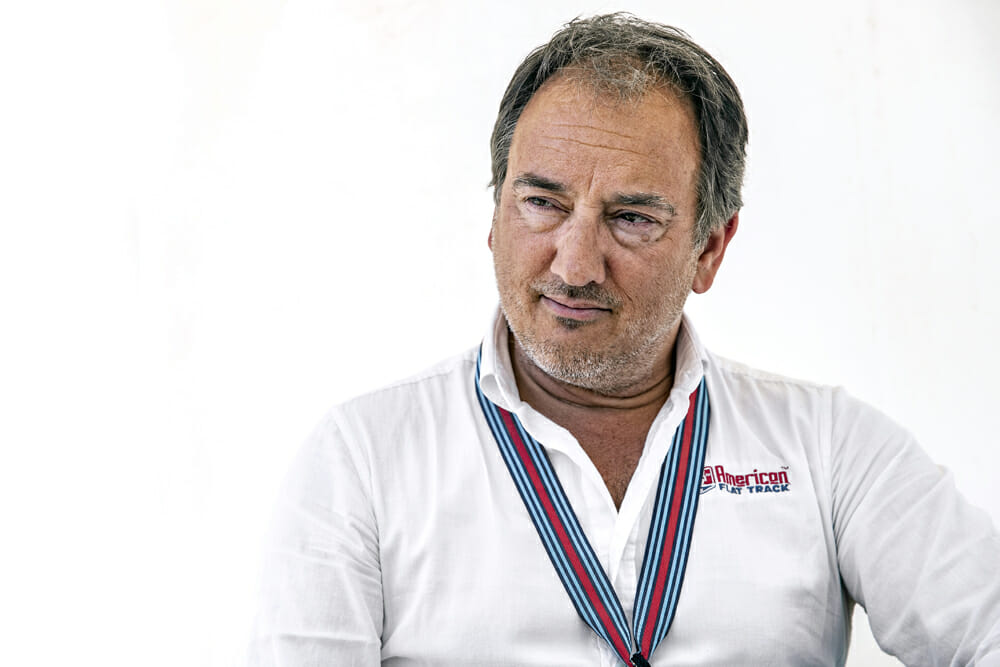 Michael Lock is the man in charge of the growth of American Flat Track. So far so good.
Michael Lock is the man in charge of the growth of American Flat Track. So far so good.
2019 saw another season of consolidation for the reborn version of America’s oldest form of motorcycle racing, with the 18-race AFT/American Flat Track Championship series hosting another thrilling season-long confrontation between Indian and Harley-Davidson in the senior class now rebranded as AFT SuperTwins for the 2020 season, with Yamaha now the first Japanese manufacturer to taste victory with a factory-backed team—twice. Although Indian-mounted riders continued to dominate, two-time champion Jared Mees faced a fierce contest to make it a hat-trick of titles, with the Bauman brothers, Briar and Bronson, eventually bracketing him in the final points table, even though Mees outscored new number-one Briar 8-5 in terms of victories.
Alongside the massive fields gridding up for the AFT Singles class, where comeback kid Dalton Gauthier wound up champion on his Husqvarna, ahead of Honda-mounted Mikey Rush in second and defending champion Dan Bromley on his factory KTM in third, the 2019 race program was expanded with the debut of the AFT Production Twins category, won by Cory Texter on the G&G Racing Yamaha FZ-07.
Both spectator attendance and media audiences continued to ramp upwards with the sport brought to a global audience via a series of hour-long weekly primetime telecasts streamed on NBCSN. Together with AFT’s own livestreaming of every round, the spectacular appeal of this uniquely American race series is now being enjoyed by a worldwide audience.
The man responsible for fine-tuning the ongoing transformation of AFT remains 54-year old Brit Michael Lock, who three years ago was delegated with the task of revitalizing it by NASCAR boss Jim France. After interviewing him in each of the two previous years about the AFT story so far, catching up with him again after year three brought it all into perspective.
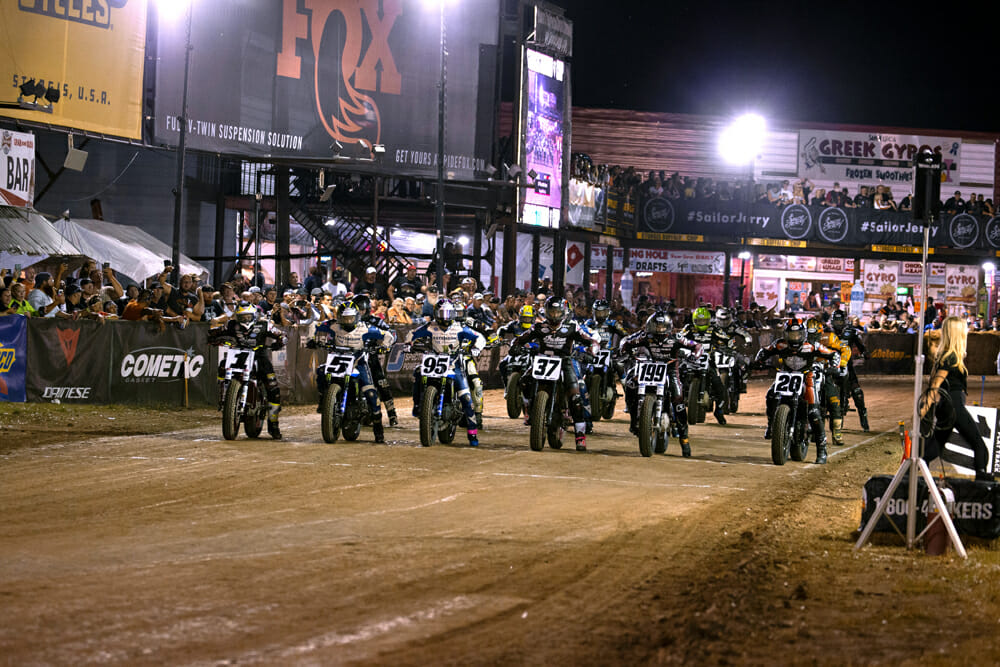 Lock feels that, despite a string of rain outs, the 2019 ATF season was a success.
Lock feels that, despite a string of rain outs, the 2019 ATF season was a success.
Michael, year three has been and gone for AFT under your direction. What’s your evaluation of where the series stands at the moment?
2019 was both thrilling, and exhausting. We suffered from three rainouts, plus a couple of other events that were rain delayed, so effectively, we went from 18 events to 22 with very little breathing space. Particularly in the second half of the season, it was pretty much non-stop all the way.
Do you feel you over-extended the series, in not allowing sufficient cushion for rain delays etcetera?
No. Eighteen dates is where we’ve been for three years now, and it’s a good number. It enables us to start mid-March with the curtain raiser at Daytona, and to run all the way through the spring and summer and end up the first week of October at Meadowlands in New Jersey. But we were very unlucky in having three consecutive rain-affected events on three consecutive weekends, which is very unusual. That then puts you on the back foot for the rest of the season, and I don’t just mean at series level, I mean for the competitors, too. They’re hauling themselves and all their equipment and people all the way around the country and not racing, and stacking up events in the second half of the season. But the series went well, with the one big innovation this year the full AFT Championship status for our Production Twins class. This is open only to twin-cylinder motorcycles up to 800cc with streetbike-based engines, so it excludes the FTR Indians and XR Harleys. It’s what is says on the label—it’s for production bikes, and the purpose of the class was partly to give teams, which just can’t compete at a factory level against the Indian and Yamaha and Harley riders, a way to still compete in the series, and still have a realistic chance at podiums and championship success.
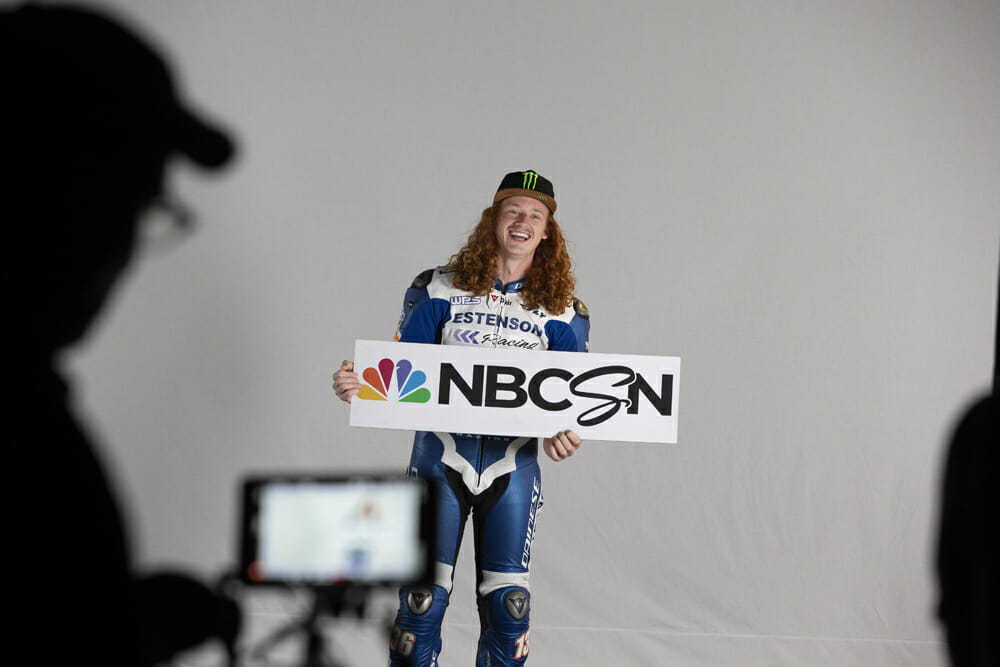 TV viewership went way up last year.
TV viewership went way up last year.
I guess like Superbike road racing, it also involves the fan who’s ridden to the track on a motorcycle like the one he sees out there being raced.
Absolutely so. You know, we’ve seen such a change in the sport in the last three years with the introduction of the XG Harley and the Vance & Hines factory team, and the proliferation of Indians across the paddock, and the Estenson official Yamaha team. The sport at the top level has really elevated—it’s experienced 10 years of evolution in just three years. And while that’s been essential for growing the sport, it’s also created some holes, one of which is precisely as you say, spectators are used to seeing bikes that they can really relate to, and riders they can really relate to.
So we introduced the Production Twins, partly for that reason, but also partly because we’ve got this extraordinary growth in the AFT Singles class, where we’re breeding a lot of new talent, and that talent wants to migrate up to the premier class, namely Twins.
But it’s not like MotoGP, where it’s a relatively simple switch from Moto2 to MotoGP, just a bit bigger and a bit faster. Here in AFT, it’s almost a fundamentally different sport between our single-cylinder motocross bikes and the twin-cylinder purpose-built race bikes. So, Production Twins gives us an opportunity to allow talent to migrate up from the Singles class and test themselves out and learn about how to ride a Twin, particularly on the Miles, before they get pitted in battle against the superstars. So that was a big change for 2019, and although we started the year slowly in terms of Production Twins entries, in fact by the time we were three or four races in, the field was full.
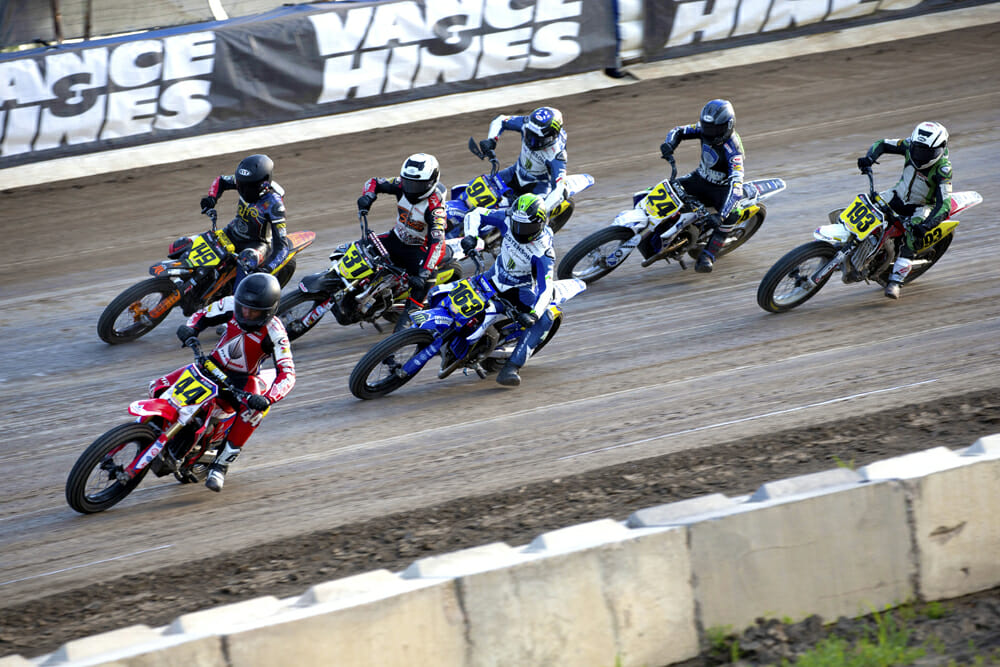 Lock strongly believes that the Singles class is the future of the sport.
Lock strongly believes that the Singles class is the future of the sport.
When you say full, how many bikes is that—a full race grid, or qualifiers, too?
Sixteen bikes, so a full race grid. We had Vance & Hines team up with Black Hills Harley-Davidson who are one of the biggest Harley dealers in the country, and field a Vance & Hines bike in the Production Twins class. And they put Dalton Gauthier on it, who’s a young guy but a remarkable talent, who’d been competing in AFT Singles. And he was spectacular. They put together a two-man team of him and James Rispoli, who you may know from racing in the UK.
Is establishing that class a nod to Harley-Davidson for having developed a production-derived AFT Twins racer, rather than to go the 100% purpose-built racer route like Indian did?
Yes, that’s right, Harley are able to field that same bike with different specifications in both classes. So, in the AFT Twins class, they’re allowed to run it up to 900cc, and in the Production Twins class, up to 800cc. But it’s essentially the same bike, so it did give them this flexibility, and they took advantage of that.
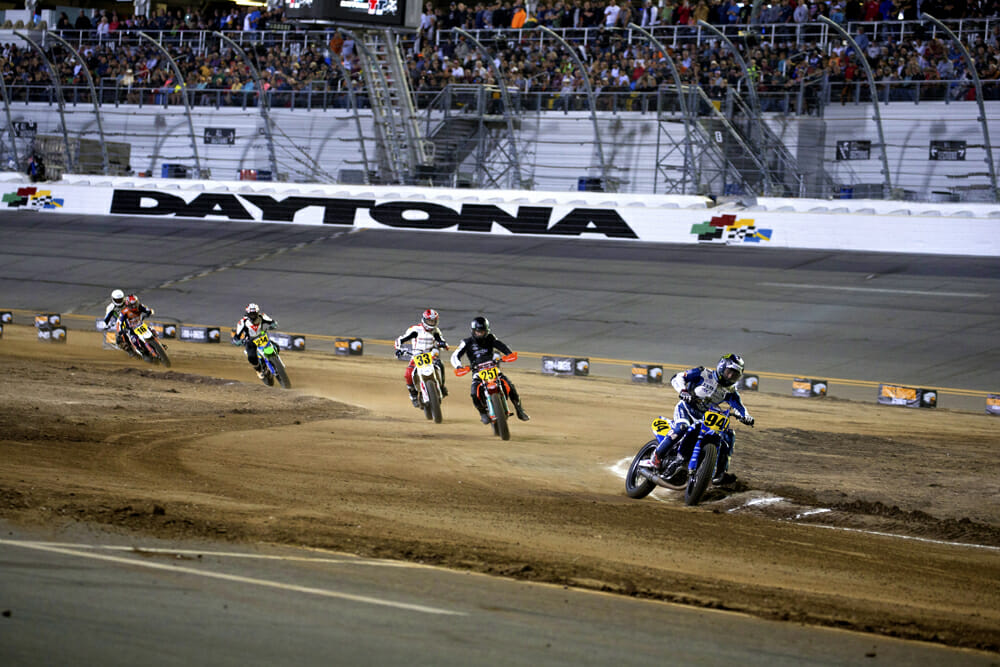 Lock wants to see more young racers coming up through the ranks such as Dalton Gauthier did.
Lock wants to see more young racers coming up through the ranks such as Dalton Gauthier did.
However, it seemed that at some races you did lack numbers in the AFT Twins class, while, as you say, being replete in the AFT Singles category. Were you concerned about the new Production Twins class maybe taking entries away from the AFT Twins?
I think that all motorcycle sport should operate on some kind of pyramid basis, with the lower the spec and the lower the costs of the class, the more entries should be vying to get in. And the pyramid should narrow at the top, where the elite are competing only against themselves, and this has not traditionally been the case in Flat Track. In fact, almost the reverse. Face it, there’s a romanticism around the traditional view of flat track, with the plucky underdog, the local amateur who can turn up with a bike he’s built in his garage, and he can compete against Jared Mees and Bryan Smith. And in years gone past, I have to say that may have been the case, but there have never been as many factory-supported riders and factory-operated teams in the sport as there are today.
So the sport’s changed, and the idea of the field getting smaller in the elite class doesn’t worry me, I know it does worry a lot of people because they think, “Oh no, the sport’s going downhill!” But it’s not; AFT is a chrysalis, and it’s turned into a butterfly with AFT Twins, where you have the best motorcycle racers in the world on dirt tracks competing against each other week in, week out. And we need to ride that wave of quality and performance upwards, because that’s what’s bringing in bigger and bigger crowds. But in AFT Singles on the other hand, I want thousands of kids across the country dreaming of being able to race in AFT, and that the point of entry is the Singles class.
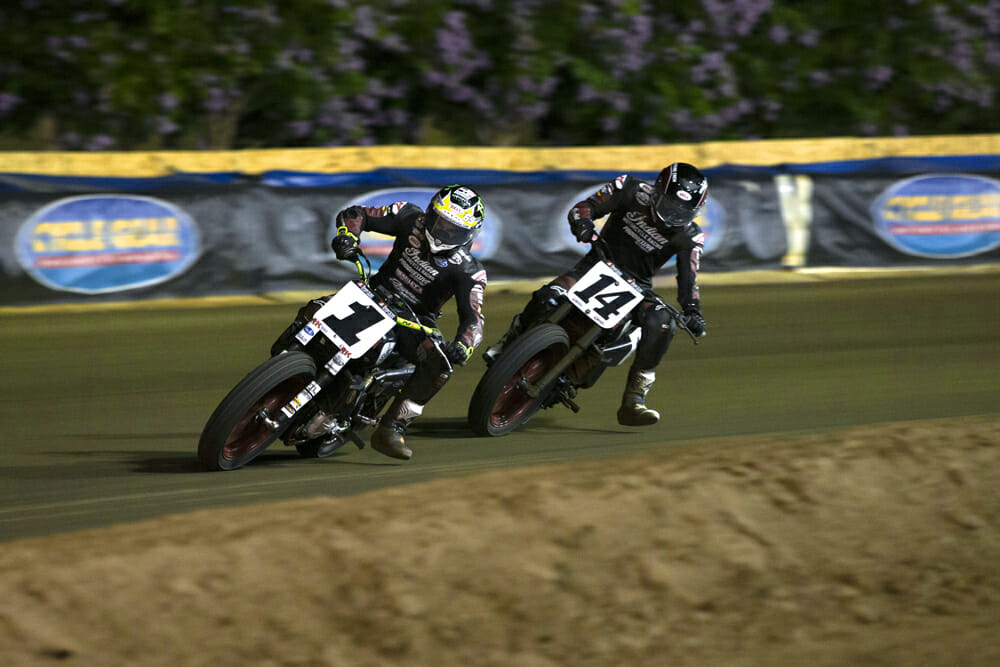 Still, the main focus is the rebranded AFT SuperTwins class, where the elite, such as Jared Mees (1) and Briar Bronson (14) vie for the ultimate flat track prize.
Still, the main focus is the rebranded AFT SuperTwins class, where the elite, such as Jared Mees (1) and Briar Bronson (14) vie for the ultimate flat track prize.
How many did you average having in Singles last season?
We had 48 to 50 entries on average, which is almost too many, frankly. And in the AFT Twins class, we averaged 24 or 25. Remember, it was a 16-rider main event, and where we’re going with the AFT Twins for next year, which we’ve now renamed SuperTwins, is that the population of the grid for the main is known before the races start, it’s just a question of qualifying and getting the grid positions for the main. We will still run practice and qualifying, and two semi-finals to set grid position for the main, but if you’ve turned up to race in SuperTwins, barring a disaster of you breaking all your bikes or breaking yourself, you’re going to be racing the main event.
Are you saying that you won’t accept more than 16 entries for SuperTwins?
No, what we’ll be doing for SuperTwins in 2020, is we will be limiting to 14 riders the number of season-long entries by teams, and we will have up to four wild cards per race. So we will have a grid of somewhere between 14 and 18, I suspect 18, at pretty much all the races. And it not only gives all our hundreds of thousands of new fans, who are not experts in the sport, they’ve just been attracted to it because it’s exciting. It gives them a much easier way to follow the sport, to follow their heroes and their villains, seeing the same guys on the same bikes each week. Of course, in other motorcycle sports we take this for granted—in Supercross, or MotoGP, or World Superbike you expect to see the same guys turn up every week, racing for the same teams on the same bikes, you would never think otherwise. Well, flat track doesn’t have a long tradition of this, so we’re trying to change it.
You talk about hundreds of thousands of spectators following it, but you do have millions watching it live on links around the world. Has your global following increased, held steady, or declined?
It’s increased substantially. We’re now recording an average viewership for each race of around 305,000 people. So obviously across an 18-race season, that’s somewhere just short of four million, and to put it into perspective, before we had the NBC deal, before we had YouTube Live and Facebook Live, basically the only way that you could see AFT was to buy a ticket and go to an event. And we had, on average, about 5000 people do that for each race. So we’ve gone from 5000 a race to 305,000 a race. So the sport has grown exponentially, and continues to do so.
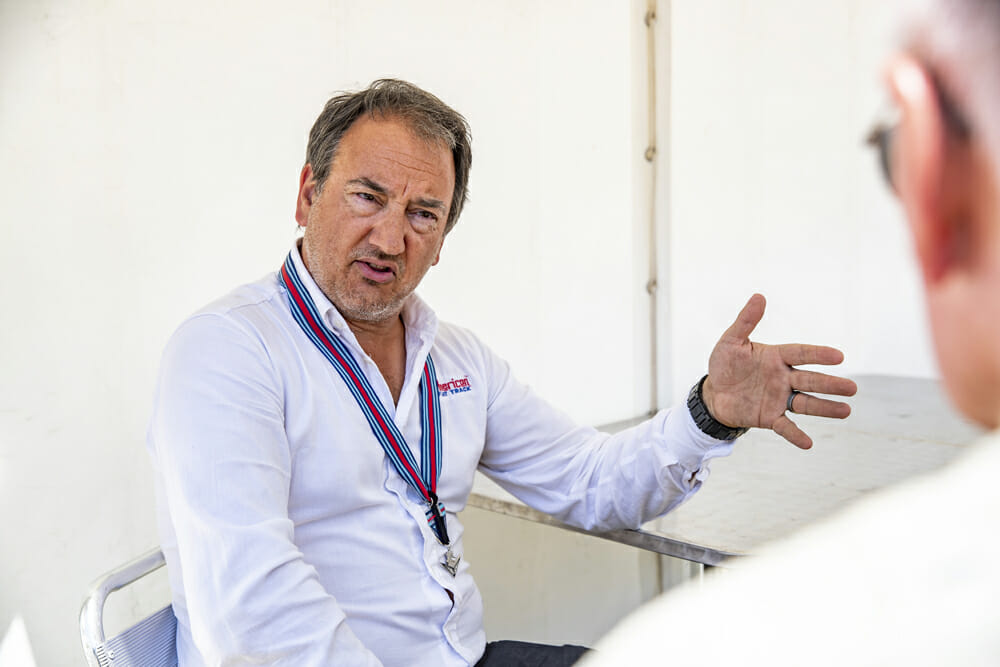 Lock’s biggest challenge? Getting millennials into the seats.
Lock’s biggest challenge? Getting millennials into the seats.
And are the promoters happy? Are you getting people to physically turn up to go through the gate and earn them some money?
Yes, but the hardest part of the business is getting people to get out of the house, to travel to an event and sit and enjoy that event for four to six hours, it’s the single hardest thing to do. If you look in the grandstand at any race, you see the majority of the people are Baby Boomers who’ve done this for 30 to 40 years and love it. We’re trying to persuade younger generations to physically attend the events, but they look at you quizzically while they hold their eight-inch screen in front of themselves, and watch it from their own couch or their own bedroom and say, “Why would I want to go to the event?” This is a cultural thing, which many other outdoor sports are also challenged by. Nevertheless, our crowds are increasing, and that’s bucking the trend of many such sports, but we’re aware we come from a low base. I’m not complacent about it, we’re always renovating the show, and we now offer a lot of off-track entertainment and family-friendly entertainment, too. Plus, we’ve re-engineered the events to be much more three-dimensional, but it does takes time. It’s much quicker to ramp up viewership on Facebook than it is to physically sell a ticket!
But you have been successful in attracting more manufacturers to the series, with Yamaha coming in this year via Estenson Racing. Is that a fully Yamaha USA supported team?
It’s a partnership between Estenson and Yamaha. Yamaha had built the bikes over the previous couple of years and tested them and developed them. And they bequeathed those bikes to Estenson who hired the riders and put the team together. Those are factory Yamaha race bikes.
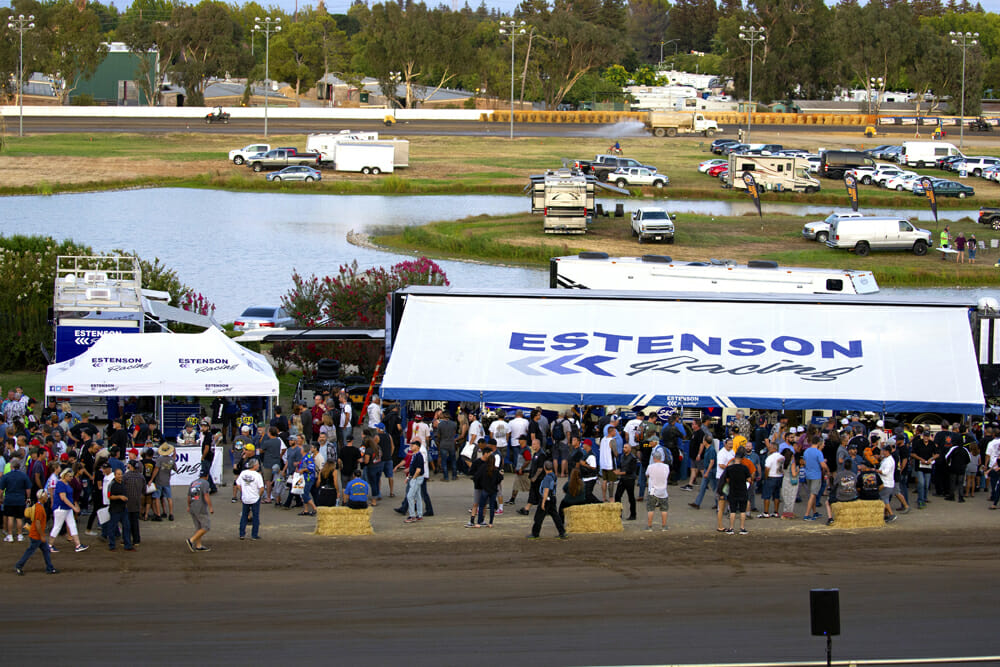 Manufacturer involvement has grown. Yamaha now has a factory team run by the Estenson Racing Team. Who’s next?
Manufacturer involvement has grown. Yamaha now has a factory team run by the Estenson Racing Team. Who’s next?
The team scored two victories in 2019 thanks to JD Beach, so presumably they’re happy about that for a debut season?
Well, I don’t know how happy Tim Estenson the team owner is! He’s a pretty competitive guy, and I think if you win just two races out of 18, he’s not happy with that. But it was their first year with a brand-new bike, so I think they did pretty well. And JD’s a rare talent, he’s a road racer who was previously a dirt tracker, who was originally a road racer! And for him to double up between the MotoAmerica road-racing season and the AFT Series last year was quite a challenge for the guy. He did every single AFT round that didn’t clash with the MotoAmerica Superbike schedule, which meant he only contested 10 of the 18 rounds. But in 2020 he’ll be full-time AFT.
Okay, so in AFT right now you’ve got Indian, you’ve got Harley, you’ve got Yamaha, and Bryan Smith came back with Kawasaki: Were you expecting him to do a bit better?
I think Bryan Smith and his tuner Ricky Howerton were expecting to do a bit better, because when they last competed with their own team with their Kawasaki-engined bikes, they had arguably the best bike out there, and they won the title in 2016 with it. But then they switched to go and race for Indian, and partly their work and partly that of other teams has developed the Indian FTR750 into a very potent weapon. But time doesn’t stand still; you know, three years in flat track a decade ago was nothing, but three years now is an eternity. I think they expected to come back and be competitive off the bat, but it’s hard out there now! But they battled with it all season and coming second in both the last two races showed they were back.
But now they’ve switched to Harley-Davidson for 2020.
Yes, Harley-Davidson is back again with a full factory team run by Vance & Hines, with Bryan Smith teamed with Jared Vanderkooi and Dalton Gauthier, and Ricky Howerton joining as Crew Chief. Is 2020 the year Harley-Davidson finally turns the tables on the dominant Indian Motorcycle team? It’ll sure be interesting to watch! CN
Continued next week…
